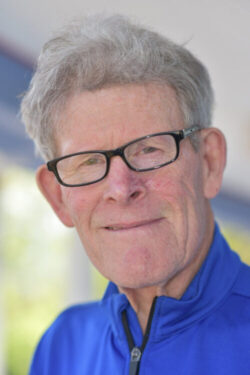After the Ides of March, when the collapse of Sixty35 Media led to a forced exodus of
employees and contributors, it seemed that we’d all have to change careers. Local newspapers
have been shutting down throughout the country, and none are hiring. As a person of a certain
age (hint: that’s when the first digit of your age is eight, and you’re not 8 years old) I was
resigned to being an unemployable geezer.
My friend Michelle suggested Substack, another suggested writing a book and a third told
me to stop whining and do something. But what?
I remembered Gen. Douglas MacArthur’s melancholy farewell after President Truman
sacked him. Quoting an old song, he said “Old soldiers never die — they just fade away.” But
thanks to Lyn, Rhonda, Bryan and many others, our March Exodus has led to Genesis, and I’m
delighted to be a small part of the Pikes Peak Bulletin team, concentrating on the Westside.
We're not fading away!
Developers, architects and builders create structures, politicians create boundaries, but
people create communities. Just as you know you’re in the Pikes Peak region if you can see the
peak, you’re a Westsider if you live in any of the historic neighborhoods west of Monument
Creek/Fountain Creek/Interstate-25. Our boundaries are fluid, but most of us are politically
chained to the elected grandees of Colorado Springs.
The heart of the Westside is, and always has been, Old Colorado City. Founded in 1859, a
dozen years before Gen. William Jackson Palmer’s men drove the first stake for Colorado
Springs in the desolate prairie east of Monument Creek, Colorado City was open to all. The
Springs and Manitou were havens for the well-off, while Colorado City welcomed workers,
businesses, dreamers and schemers. Colorado City had a great run until a series of bad decisions
led to a forced annexation by Colorado Springs in 1917.
Now, 106 years later, OCC and the Westside are still outliers in a tamely conservative city.
Gen. Palmer’s genteel community has long been eclipsed by suburban sprawl, as homogeneity
replaced heterogeneity.
In practice, this has meant continuous struggle with predatory developers, clueless
bureaucrats and disinterested elected officials. The historic Westside includes the largest late
19th/early 20th century neighborhood in Colorado, but none of the buildings have statutory
protection against demolition or radical change. And that’s fine with most of us — we don’t like
being bound by bureaucratic mandates, and we welcome seeing new homes rise from long-
vacant lots.
Preserving this diverse, long-established and ever-changing place has always been
difficult. Dave Hughes put together the coalition that preserved Old Colorado City, Sallie and
Welling Clark fought tirelessly to keep the city from closing Fire Station 3 and the Organization
of Westside Neighbors has dealt with multiple challenges for decades.
We dodged a bullet recently when an ill-conceived development at 21st and West Uintah
street got nixed by the city (full disclosure: our house is three blocks from the site). Michelle
Talarico’s election to City Council is good news, but Sallie Clark’s defeat in the mayoral race
was saddening.
We’ll have plenty of issues to write about during the next few months; a new mayor, new
faces on City Council, new development proposals, new regulations and new crises.
We’ve seen fire and we’ve seen rain, but we endure — because we’re Westsiders!

